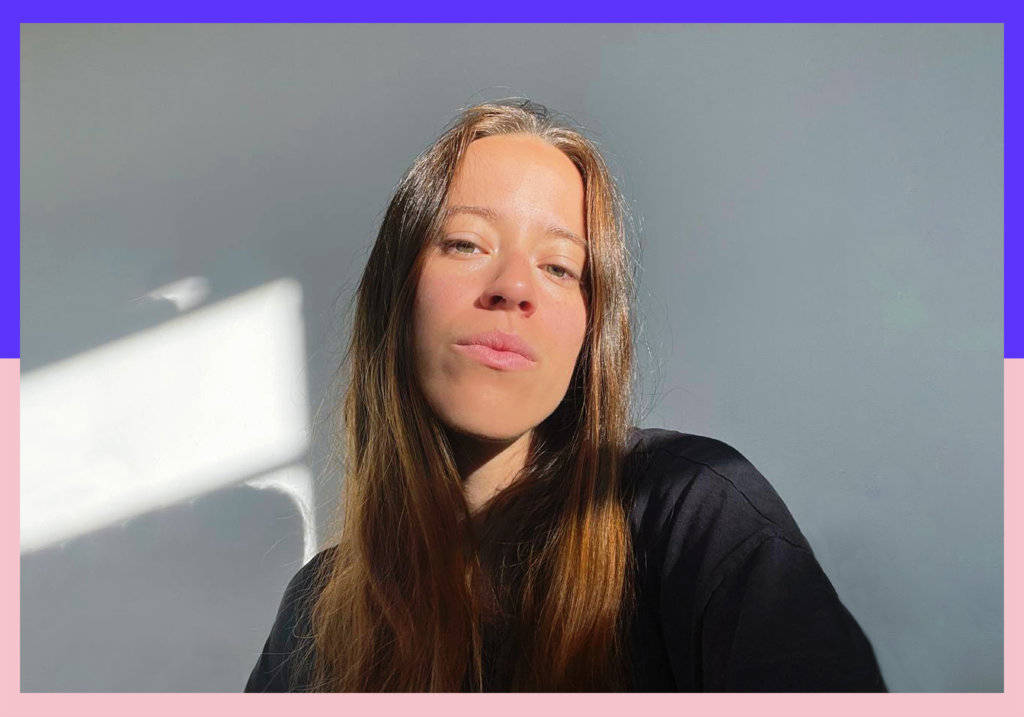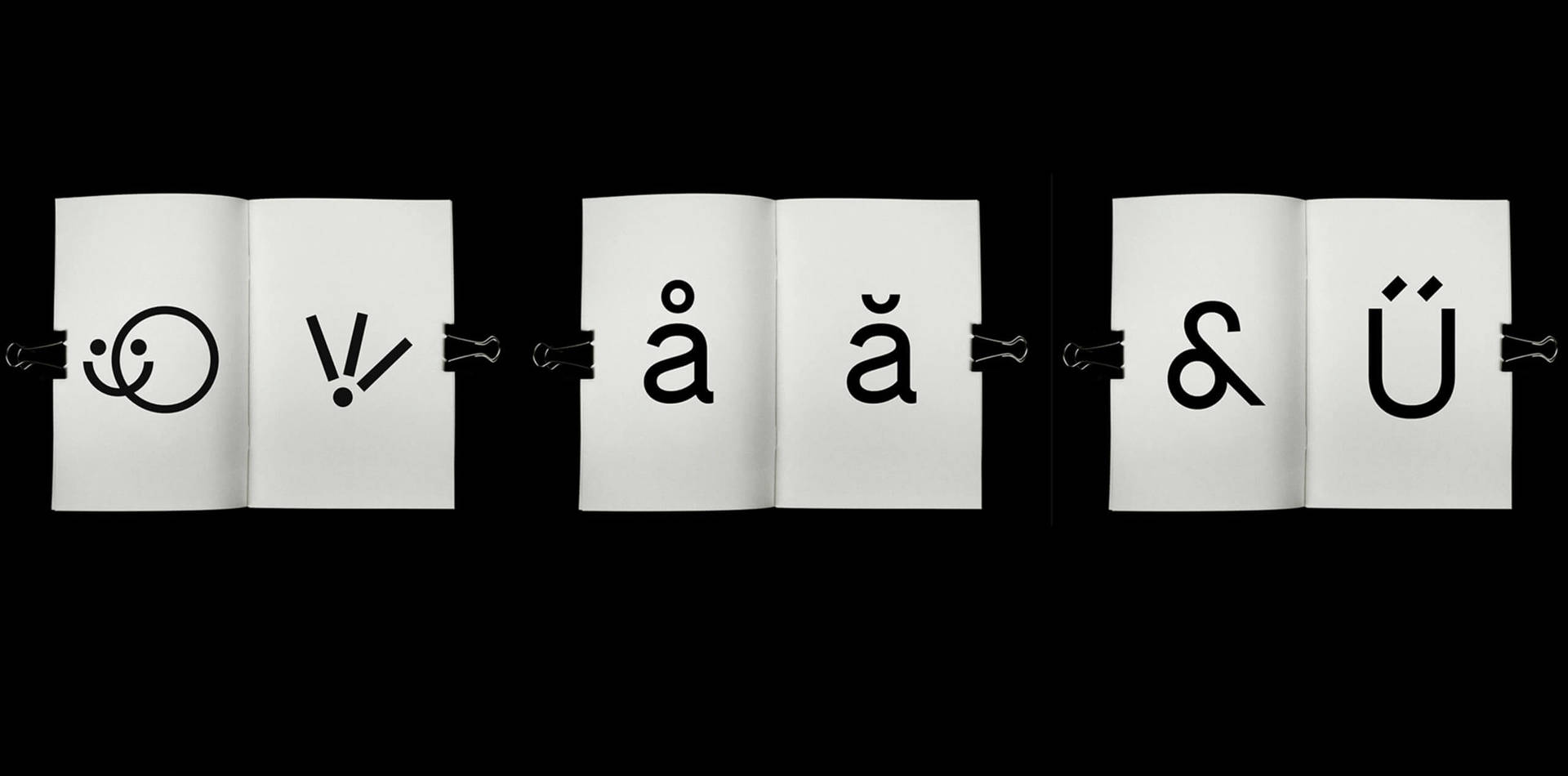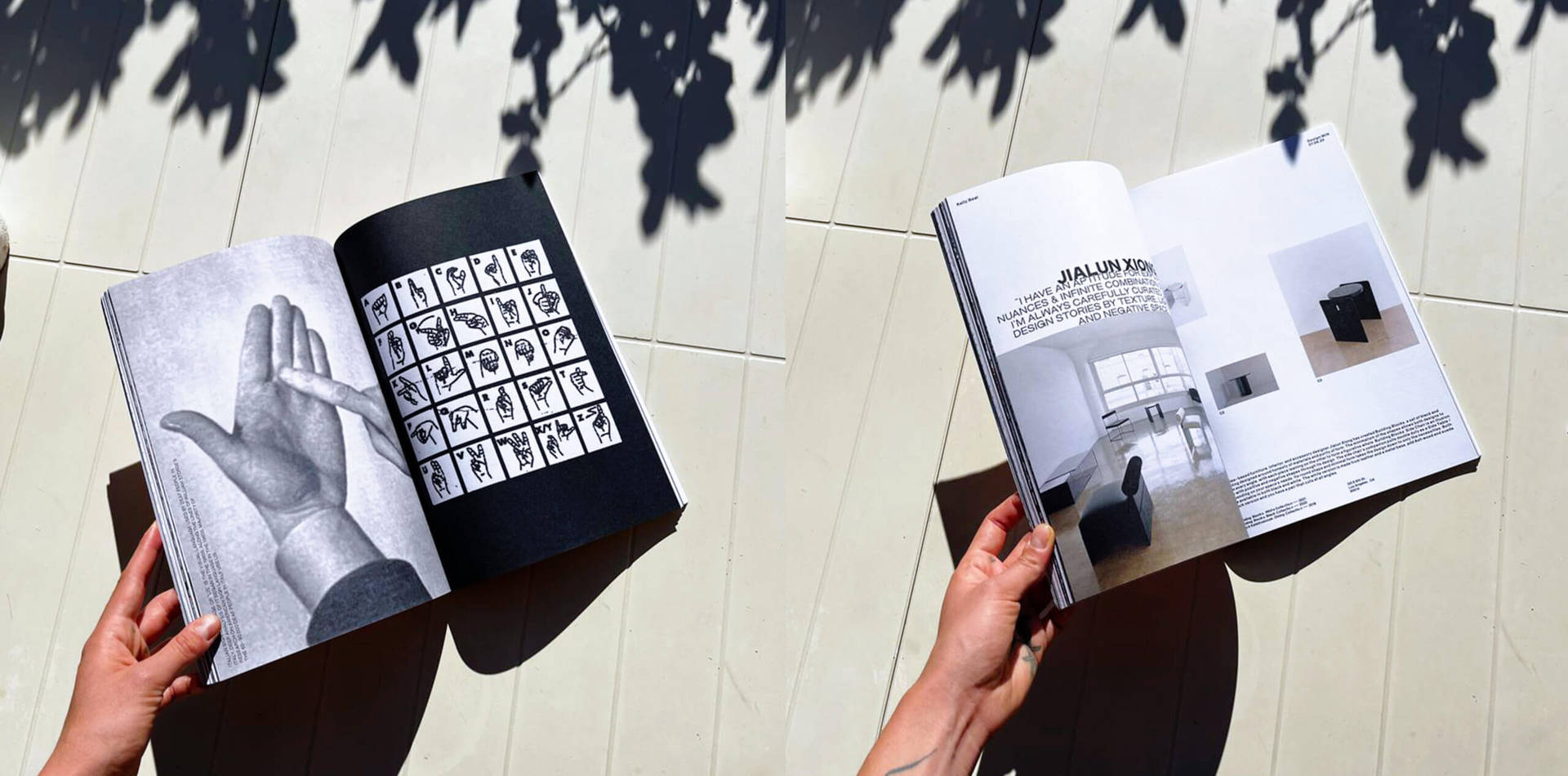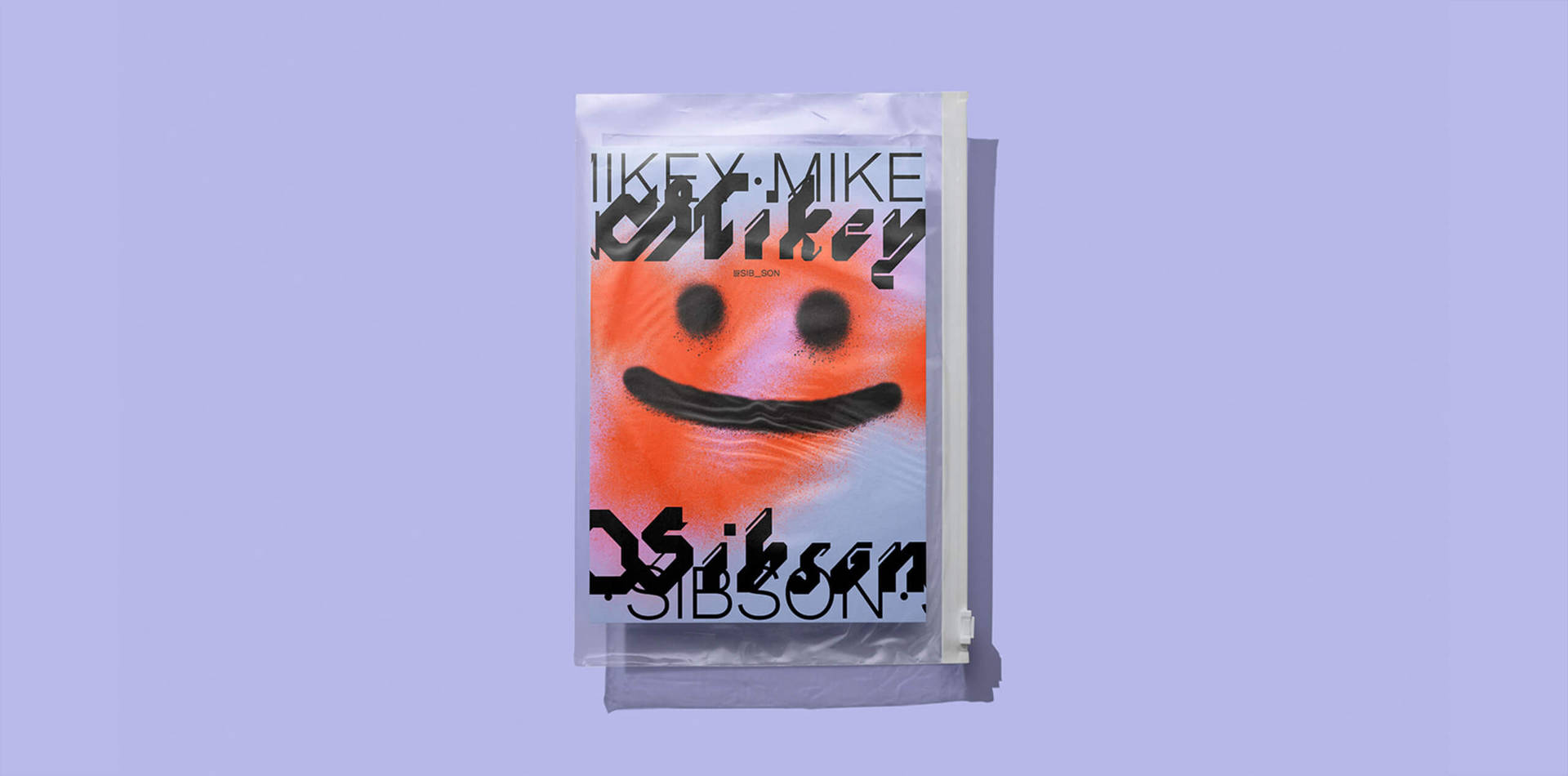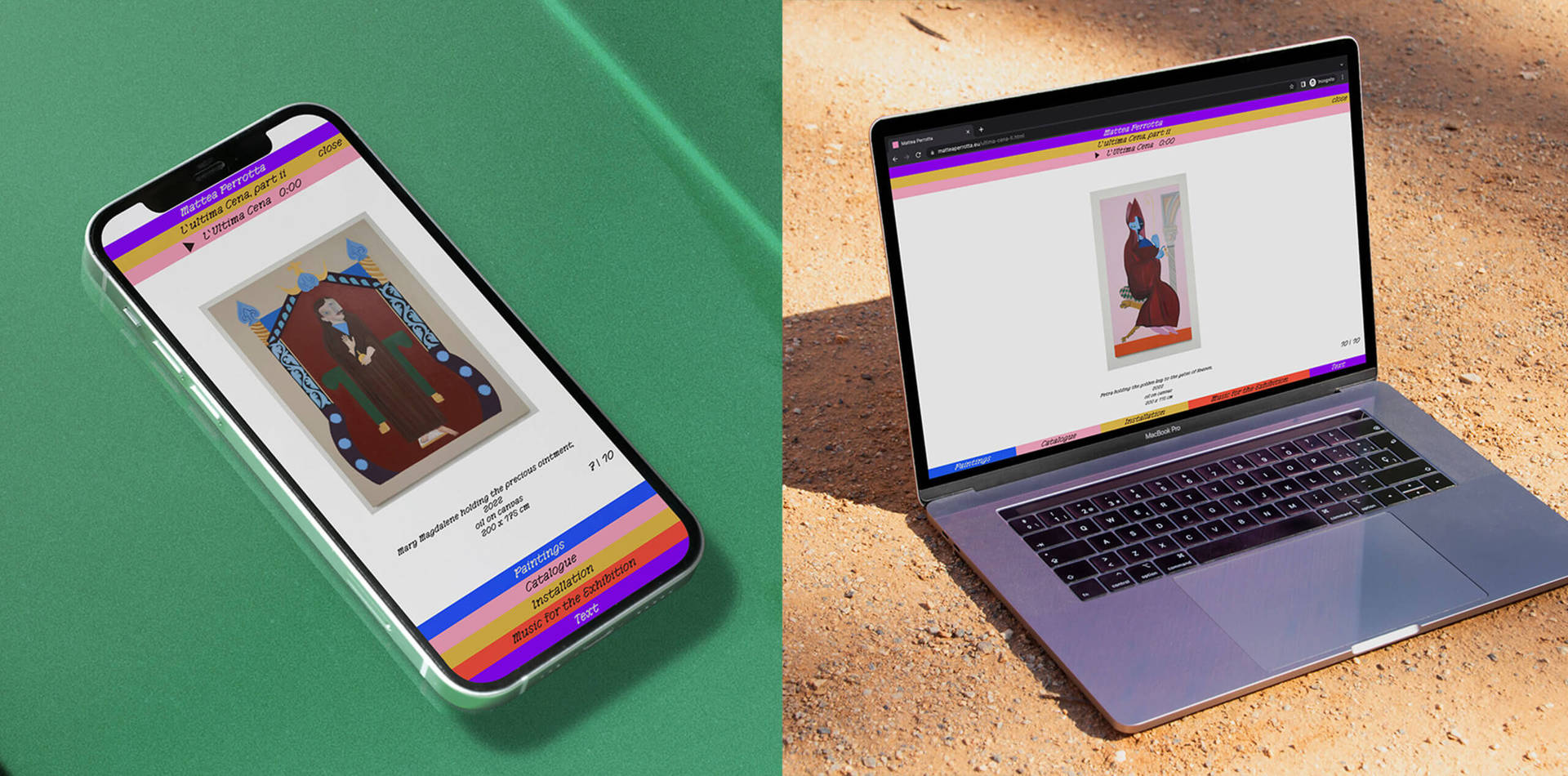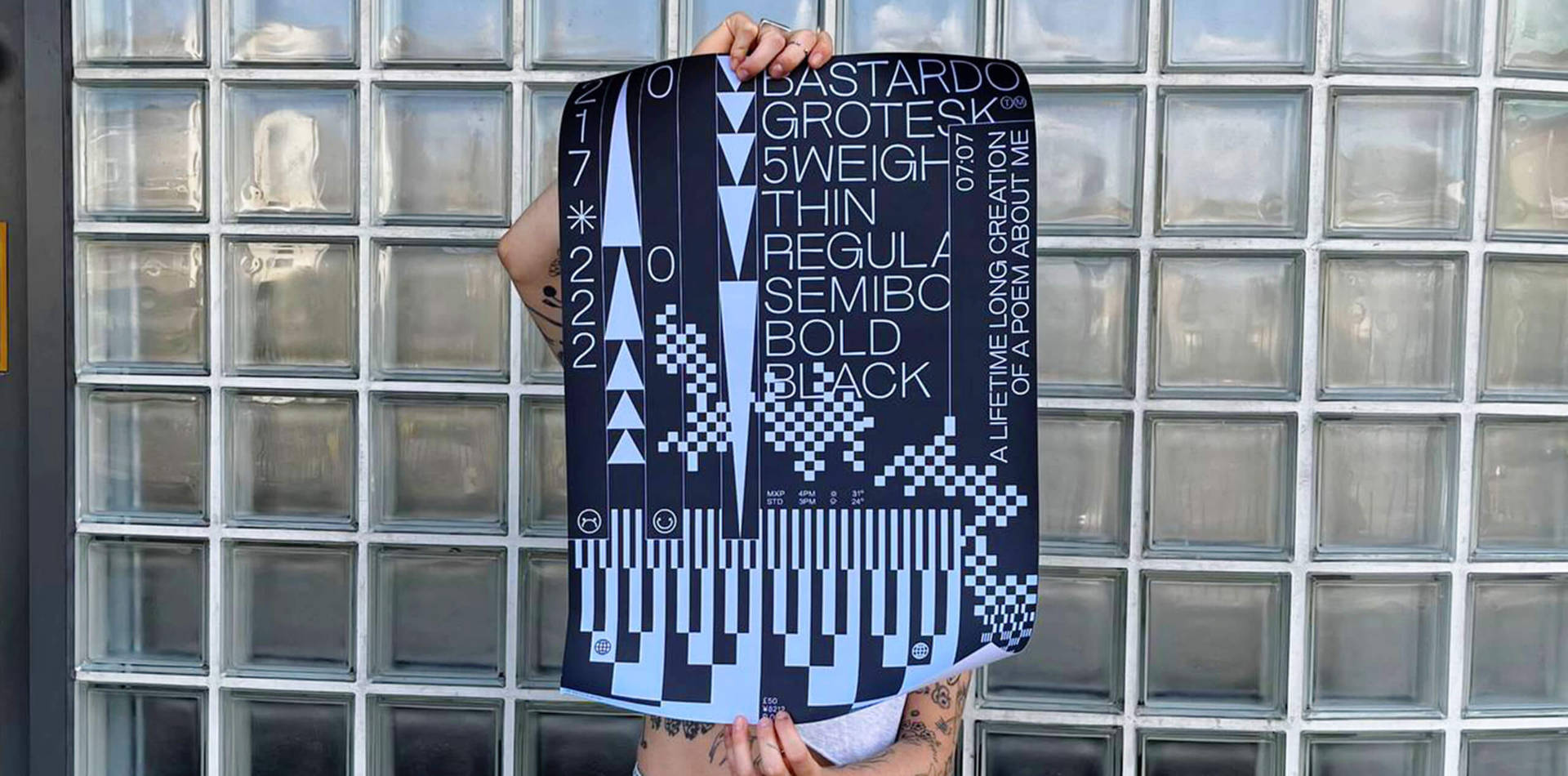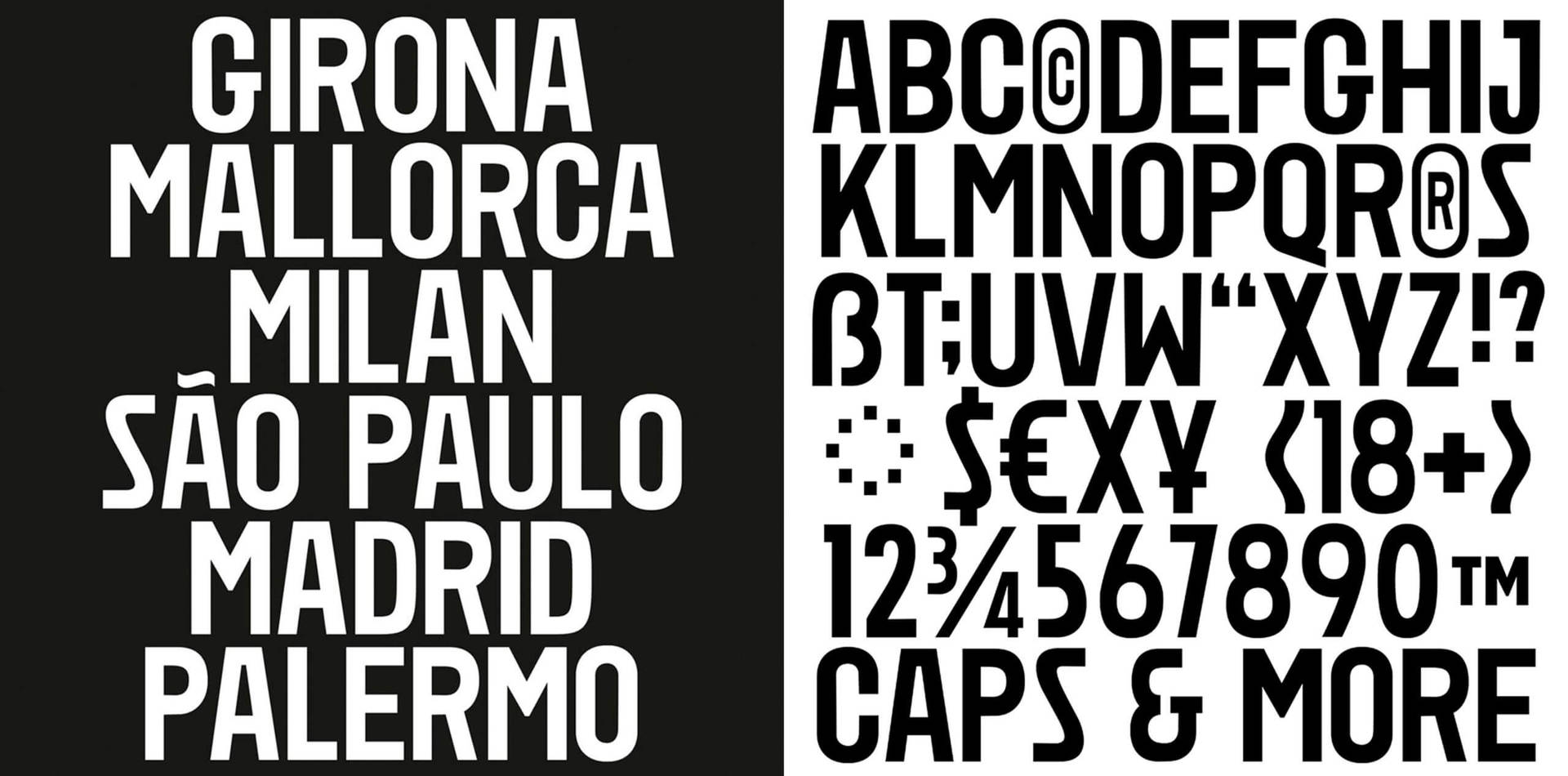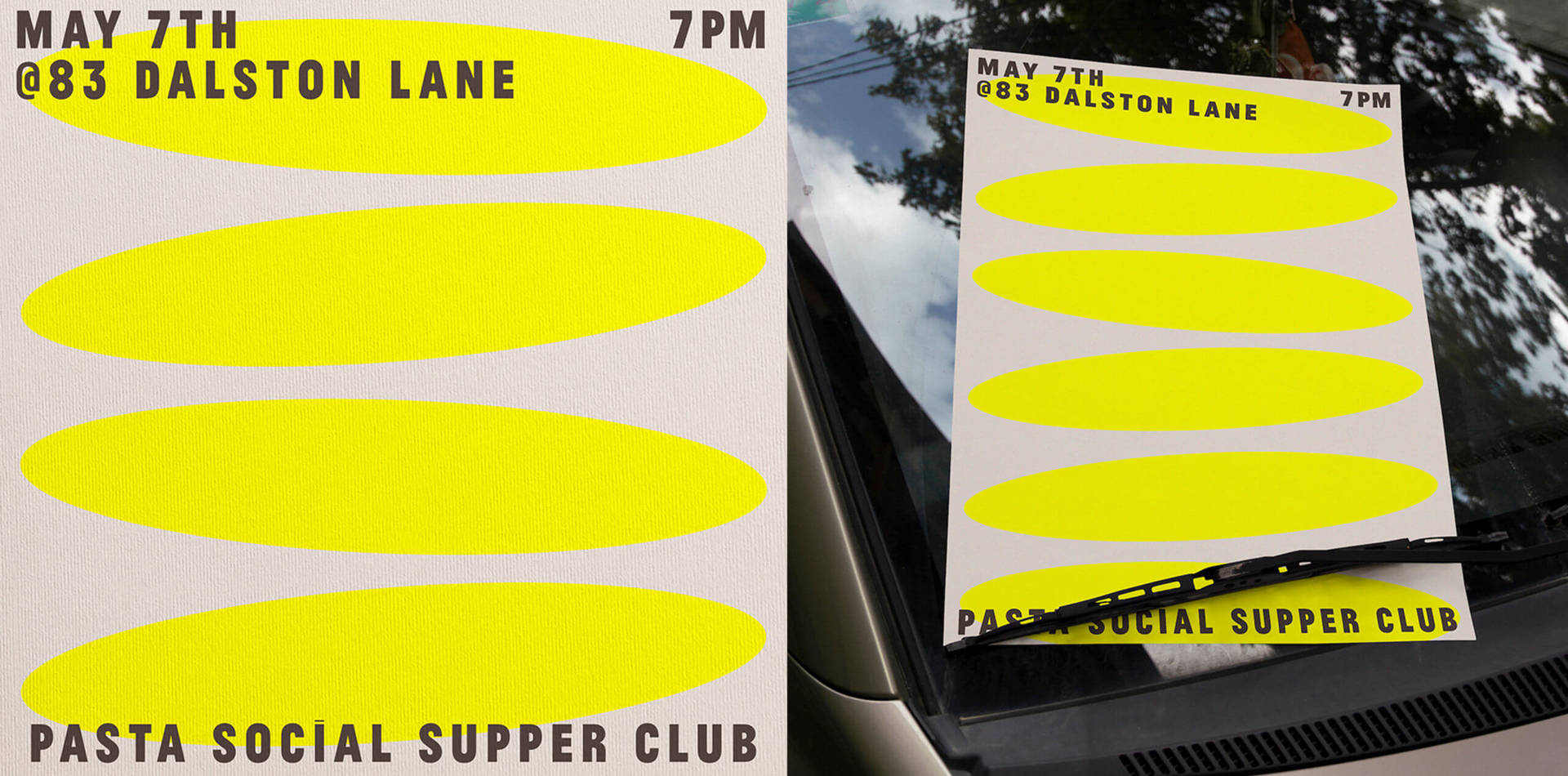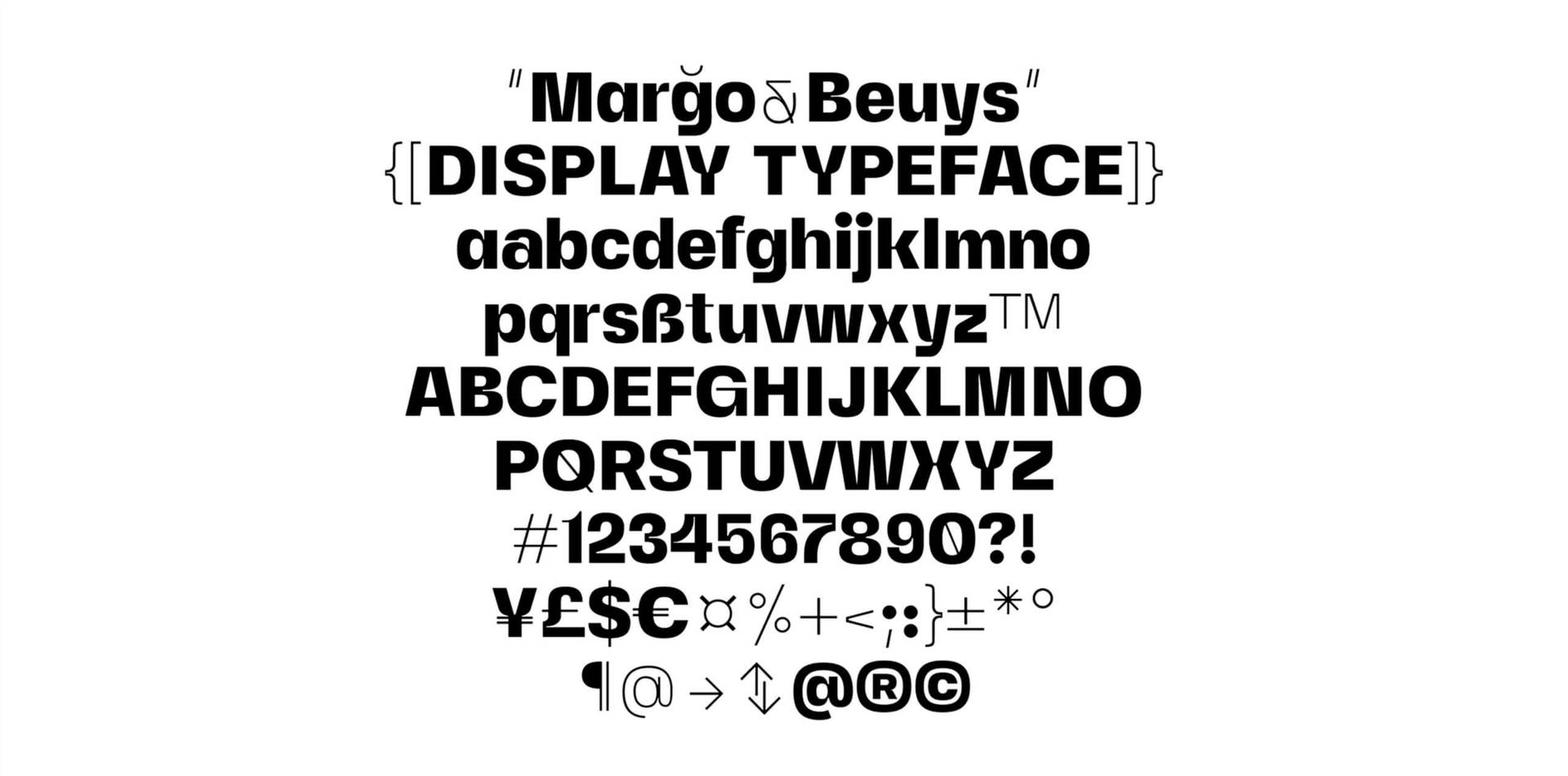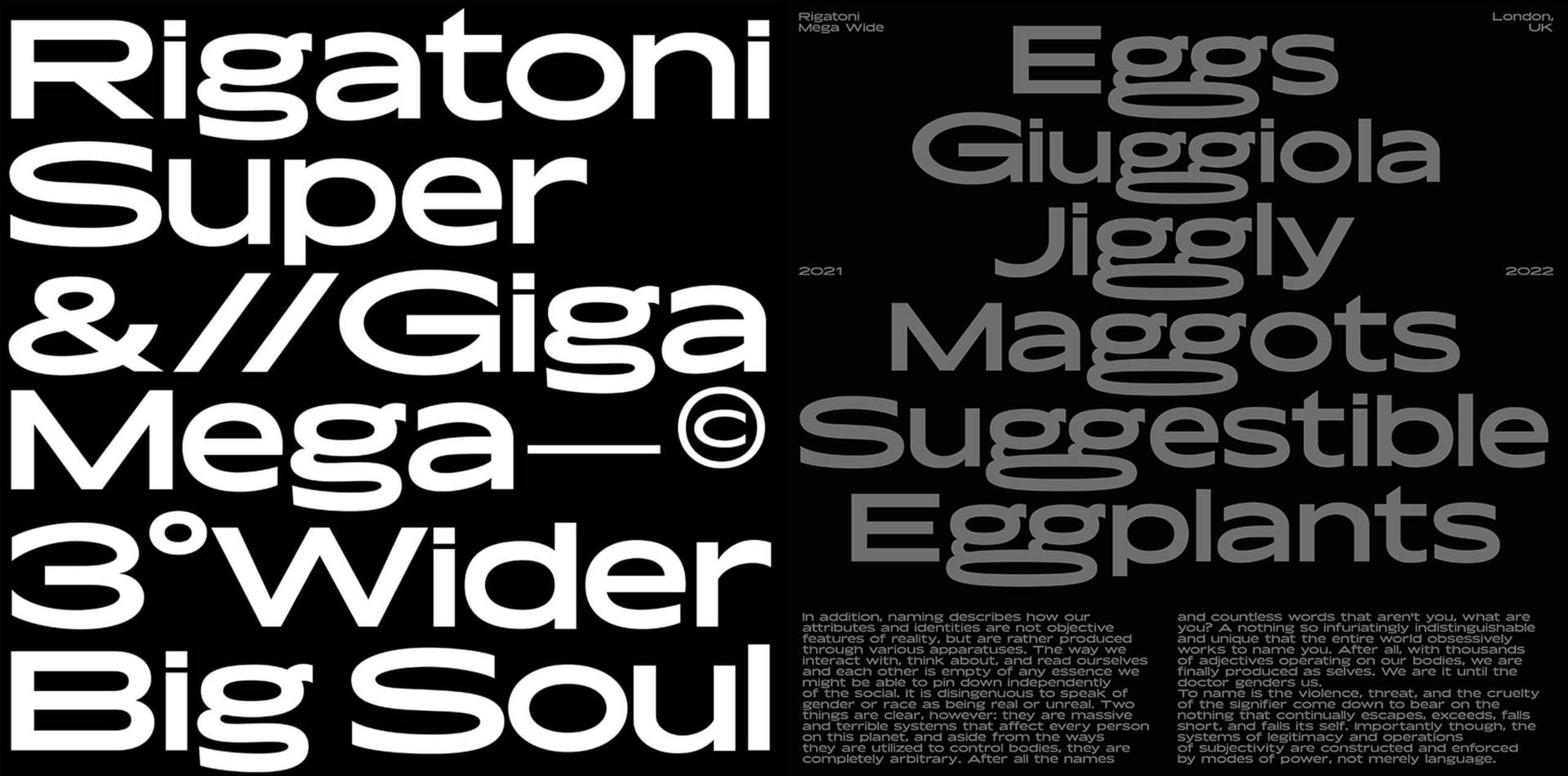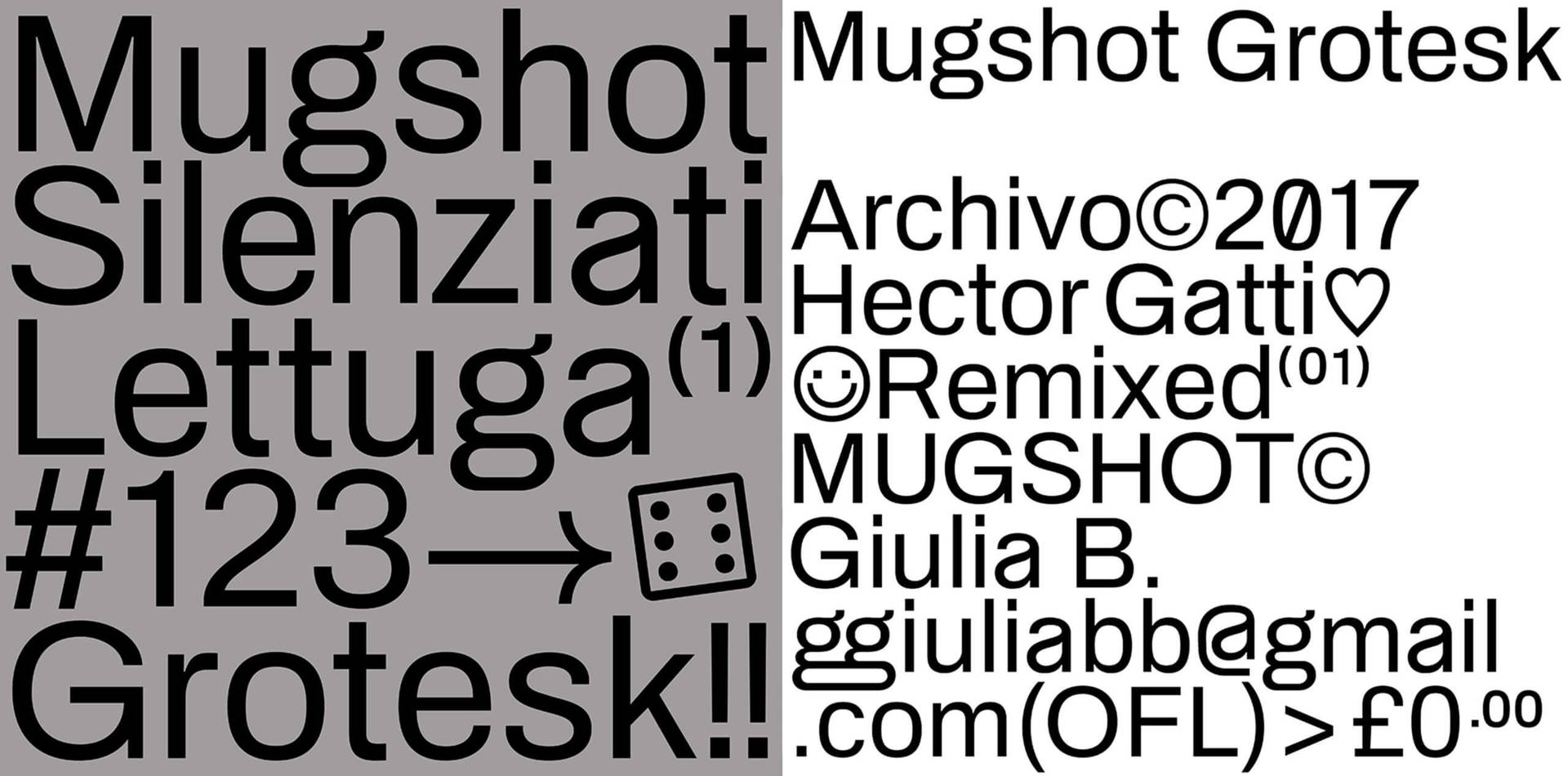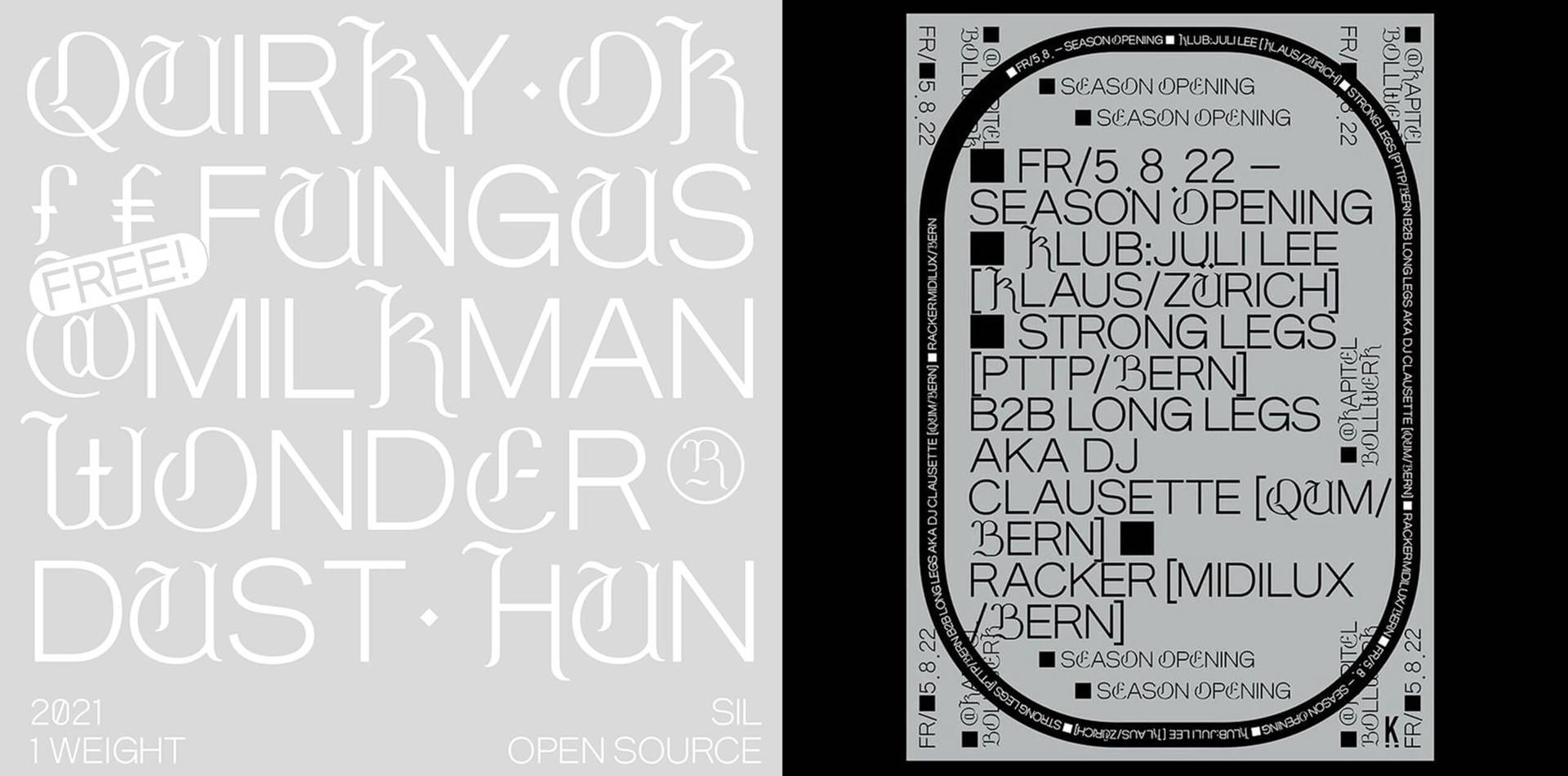Giulia Boggio (she/they) is a Graphic Designer from Italy, currently based in London, whose editorial design work features a distinctive use of bold typography and graphics. Giulia’s interest in type design and letterforms goes back to their university years, and although they trained in graphic design, most of their recent work has been primarily concerned with typeface creation.
Giulia tells us about their design process, the importance of choosing the right typeface for each editorial project, how they create “bold strong unapologetic design” and how their creative process has a very organic flow. From finding inspiration in everyday objects to creating mood boards and developing ideas, Giulia likes to “let things happen” or, as they tell DbyW, “I never really plan on the next move, I just really lean into what’s happening and see where it goes.”
Giulia is also passionate about greater inclusion and diversity in the creative industries. They discussed with DbyW the challenges that women and non-binary creatives of any background face when they enter the industry and offer advice on how to overcome self-criticism and develop the confidence to talk about your own creative work.
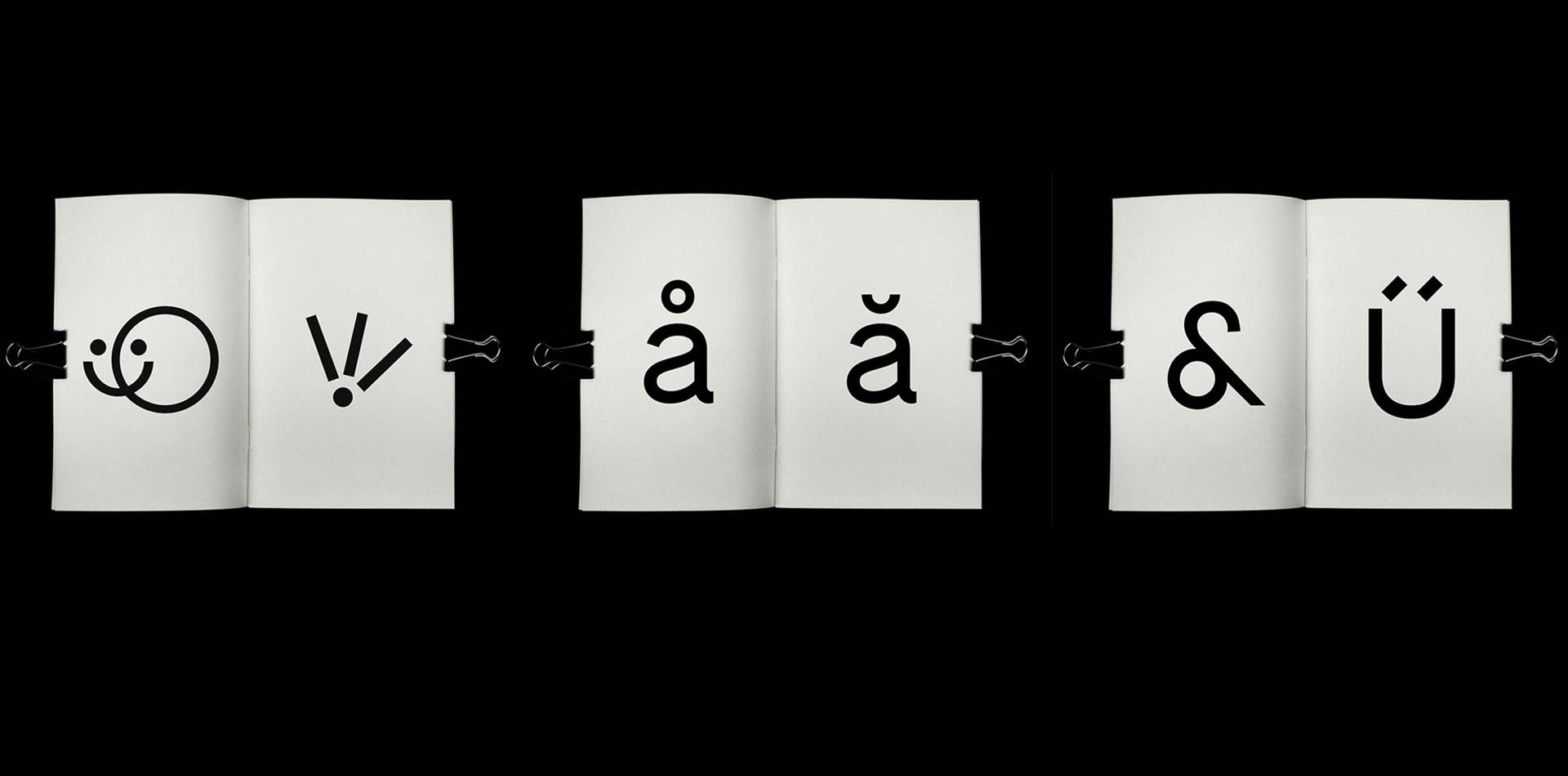
We talked with Giulia to find out more about their unique creative approach to design and typography, challenges they’ve faced during their career so far and how we can encourage greater diversity in design.
Special offer: Use the code DBW25 to get 25% off personal license font purchases on Giulia’s website: www.giuliaboggio.xyz
Can you tell us a bit about you and your career as a graphic and typeface designer?
I studied Graphic Design and Art Direction in Milan, which is near where I grew up. I only picked up type during lockdown, here in London. I always liked type. But having a lot of time on my hands I started working on a couple unfinished uni projects and realized this was something I really enjoyed.
Am I a type designer? Dunno. Labels are always very restricting, and a lot of people still have mixed views on folks that don’t follow the traditional route into things. “I design type” feels more fitting. I have no formal training. I never really plan the next move; I just really lean on what’s happening and see where it goes. These are 2 out of of 3 of my occupations at the moment (the last one is tattooing as @jessica__rubbish 🙂 ), I always like to keep it moving. Having many gigs going on gave me the chance to relax a bit about where each individual one was going. Sometimes I focus here, some there; I never really feel as though I’m working.
I am, quite proudly, a jack of all trades. I remember reading that the complete saying was originally “A jack of all trades is a master of none, but oftentimes better than a master of one.” 😉
“Am I a type designer? Dunno. Labels are always very restricting, and a lot of people still have mixed views on folks that don’t follow the traditional route into things. “I design type” feels more fitting.”
Where do you find inspiration for a new typeface design, how do you usually approach this kind of project and what process do you go through?
I am a chaotic being so there’s about 15 files containing no more than 3-4 glyphs each on my desktop. One day I’ll open one and crack on or just bin them all. Who knows?
In general, I find inspiration in shapes and objects. These can be a chair, someone’s nose or the shape of a staircase. I love observing the beauty in things.
We not only love your typeface design but also your editorial work. How do you go about selecting typefaces for particular projects?
I love how one can make or break the other and, in this balance, I try to find the right fit. I love using small foundry types, open-source types and types from queer and femme designers. I like bold strong unapologetic design, and this applies to type as well.
Usually, the type comes at some point in the moodboarding process, I notice a pattern in the typefaces I’m bookmarking and from there I funnel it down to a small selection. I also have a board for open/free type www.are.na/giulia-boggio/free-type-g3qqnwxoc0e that I keep regularly updated and have a browse whenever I get a small project.
Can you tell us about any standout projects that you’re proud of?
I recently worked on Mattea Perrotta’s website, she’s a really cool painter. Here the brief was “a renaissance festival on mushrooms with a punk band playing” which is quite a thrilling and fun way to start on a job, so I obviously had a blast designing and building it. All text is set in G2 Ciao, gives it the right trippy spin: matteaperrotta.eu
And a poster for Bastardo Grotesk is also on its way to Poster House in NYC, which is pretty exciting for someone who has barely travelled outside of Europe.
What are you currently working on?
This year I have started collaborating with an agency as a freelancer/contractor, which is a really interesting, mad learning experience as I get to see the BTS of how a big project is carried from A to B and how different creatives work.
I have just released a new typeface called Sampia (shown below) that I started working on in 2020 and am just getting around to finish up. The specimen images for this are really fun.
Have you faced any barriers or challenges during your career and how have you overcome them?
Yes and no. No because I was lucky to grow up in a family that, even if sometimes reluctantly, let me pursue all my creatives endeavours. And probably because I am as stubborn as it gets, which somehow landed me here. I think everyone in a creative career will understand, but the big challenge was me. The big antagonist is oneself. The self-criticism and perfectionism come mixed with a fear of failure and a sprinkle of yearning for validation. Serve it on a plate of the imposter feeling you get when you enter an industry from the side door. But we’re good now, we get along and I think it shows in the work.
In general, I think I was lucky in that even if I had to work like mad to make myself; I never had to face the struggles I see some other people have to overcome and overall I had a supportive support network. Tattooing is a completely different story but that’s one for another time.
How do you think we can encourage greater diversity and inclusion in the creative industries?
It is good to see more people accessing all areas of design. I love what Amber is doing with You Creative Media and recently with ALT Type. I love that I see more folks pushing designers to expand their skillset and glyphset: @ar_tchallenge or @futuress_org. I think it is very interesting to see more people pick relevant type designers in the same way you would pick a relevant photographer based on the project.
We do need diversity; we do need cultural relevance and we need to de-centralise Latin as the standard too at some point. I want more foundries to offer different language support and representation as we’re going towards an extreme globalization. Design must follow. Big foundries/studios especially, the folks that have the access to designers from across the globe and financial support, they should work towards setting a new standard, I think.
“We do need diversity; we do need cultural relevance and we need to de-centralise Latin as the standard too at some point. I want more foundries to offer different language support and representation as we’re going towards an extreme globalization.”
Do you have any words of advice for women, gender diverse and non-binary creatives in the early stages of a career in graphic/typeface design?
Pirate the sh*t out of it. For real. Fake it till you make it and hustle your way in. Have the confidence of a mediocre white man someone said, and I think it’s quite a point. I think minorities are made to question themselves a lot more before putting out in any way and this only benefits the status quo.
I remember questioning if my sh*t was good enough and being ashamed of showing off my work. I felt like an impostor, but really is this something real or just something forcefully ingrained into our brains and bodies by society, the industry and academia. I think the latter, and this made me go for the “f*ck it” mentality a lot more.
“I felt like an impostor, but really is this something real or just something forcefully ingrained into our brains and bodies by society, the industry and academia. I think the latter, and this made me go for the “f*ck it” mentality a lot more.”
